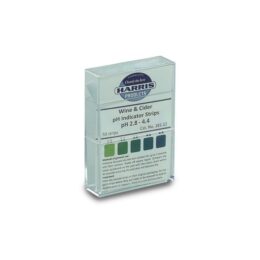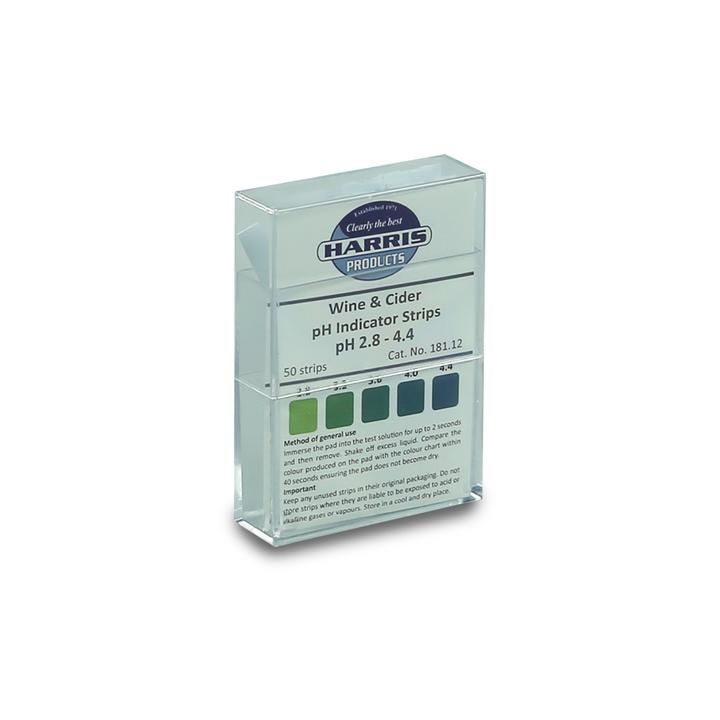Wine pH Indicator Strips (Acid Test Strips)
£6.50
Get it shipped -
Order within -
Strips are the quickest and easiest way to test for pH. A pack of 50 Wine pH strip range 2.8 – 4.4. Simply and quick to use.
Description
Wine pH Indicator Strips (Acid Test Strips)
 Strips are the quickest and easiest way to test for pH. Simply dip the swab strip into the liquid, remove and shake to remove excess liquid and then compare against the colour chart on the packaging within 30 seconds to obtain the pH reading.
Strips are the quickest and easiest way to test for pH. Simply dip the swab strip into the liquid, remove and shake to remove excess liquid and then compare against the colour chart on the packaging within 30 seconds to obtain the pH reading.
The lower the number the higher the acid level in the liquid. Therefore the strongest acid has a pH of 1 and the weakest acid a pH of 6. A liquid is considered neutral with a pH value of 7 (water has a pH value of 7).
Wines and ciders with a low pH reading (farthest away from 7) will taste tart and crisp. Conversely, those with a higher pH (nearer to 7), will be more prone to bacterial growth. Therefore, it is essential to achieve the correct acid balance for taste and stability of the finished wine or cider.
Wines:
Most wines fall around a pH reading of 3 or 4. For white wines, a desirable reading is a pH of approximately 3.2, while the best pH for red wines is around 3.6.
Ciders:
It is important that the acidity of the juice has the correct pH. The ideal pH reading for cider is between 3.2 – 3.6. A weaker acid content of pH 4.0 or above can lead to flavour problems and make the juice more prone to bacterial infection.
How to increase acid balance (lower pH reading)
Acid Blend is by far the best way to adjust wine pH, as it combines all 3 acids (tartaric, malic, citric) in the proportions found in natural grapes. It is advisable to increase the acid content in small doses starting with a dose rate of 1g per litre. Then re-test and add more acid if necessary to achieve the optimum pH level. This method will avoid a final acid content that is too strong.
For Cider, Malic Acid can be substituted for Acid Blend. The dose rate is the same, starting at 1g per litre.
How to lower acid balance (increase pH reading):
If the acid level is too high, then add Calcium Carbonate (Precipitated Chalk) to the Wine or Cider, at a starting rate of 1g per litre. Sometimes this can produce a sediment as the acid is neutralised. Potassium Carbonate or Acid Reducing Solution can also be used to reduce acidity. Once added, leave the Wine or Cider in a cold place for one week to allow any acid crystals to fall out as a sediment.
Additional information
| Weight | 0.01 kg |
|---|---|
| Manufacturer |







Reviews
There are no reviews yet. Be the first one to write one.